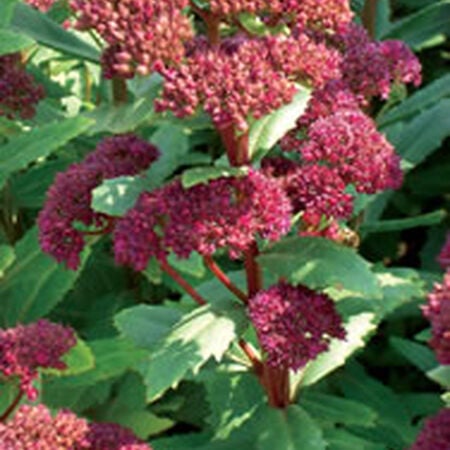Emperor's Wave, Sedum Seeds
Key Attributes
Key Attributes
Product Details
Weight
0.008Depth
0.1Height
4.5Width
3.25Plant Height
12-18"Botanical Name
Sedum TelephiumSeed Type
SeedAdditional Characteristics
Attracts Pollinators, Attracts Birds, Deer Resistant, Extended BloomsPacket
50 SeedsSow Depth
1/8"Breed
Open-polliantedSun
Full SunGrowing Conditions
Container FriendlyLife Cycle
PerennialSow Method
TransplantCategories
FlowersDays To Maturity (# Days)
110Components
Growing Instructions
![]() Learning Download: Sedum Growing Instructions
Learning Download: Sedum Growing Instructions
Sedum is a perennial plant that has thick, succulent leaves and its star-shaped flowers bloom in clusters. Sedum are easy to care for and are hardy, tolerant plants.
Before Planting: Most times, sedum prefers to be planted in areas that get full sun.
Planting: Sedum seeds should be planted in the early spring.
Watering: These plants do not require much water or care once they become established, but gardeners should still check them regularly to make sure the soil isn’t dry and in need of water.
Fertilizer: Usually, the only fertilizer needed to encourage sedum growth is a handful of all-purpose granular fertilizer. Sprinkle this on the soil each spring, and that should be all the sedum plant requires.
Days to Maturity: Sedum blooms in the late summer and last throughout the fall.
Harvesting: Sedum can work great as a cut flowers to display in a bouquet because of their longer stems and long-lasting blooms.
Tips: once the plant is finished flowering for the season, cut it back to maintain its shape or try to contain the plant to one area.
Shipping Schedule
Our Seed Promise
 "Agriculture and seeds" provide the basis upon which our lives depend. We must protect this foundation as a safe and genetically stable source for future generations. For the benefit of all farmers, gardeners and consumers who want an alternative, we pledge that we do not knowingly buy or sell genetically engineered seeds or plants.
"Agriculture and seeds" provide the basis upon which our lives depend. We must protect this foundation as a safe and genetically stable source for future generations. For the benefit of all farmers, gardeners and consumers who want an alternative, we pledge that we do not knowingly buy or sell genetically engineered seeds or plants.
The mechanical transfer of genetic material outside of natural reproductive methods and between genera, families or kingdoms, poses great biological risks as well as economic, political, and cultural threats. We feel that genetically engineered varieties have been insufficiently tested prior to public release. More research and testing is necessary to further assess the potential risks of genetically engineered seeds. Further, we wish to support agricultural progress that leads to healthier soils, to genetically diverse agricultural ecosystems, and ultimately to healthy people and communities.
To learn more about the "Safe Seed Pledge" please visit www.councilforresponsiblegenetics.org.

